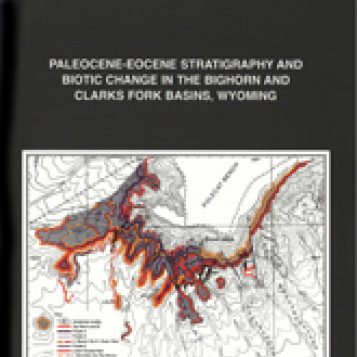33. Paleocene-Eocene Stratigraphy and Biotic Change in the Bighorn and Clarks Fork Basins, Wyoming

Philip D. Gingerich, Others
The Bighorn and Clarks Fork basins of northwestern Wyoming are world-renowned for their brightly-colored fossil beds yielding mammals and other vertebrates of the Paleocene and early Eocene epochs. The first collections were made by Jacob Wortman in 1880 and 1881 while employed by Edward Drinker Cope of Philadelphia, one of the best known American vertebrate paleontologists of the nineteenth century. Wortman was very successful, and as a result Cope was able to describe many new genera and species based on this collection. William Benyman Scott of Princeton University tried to duplicate Wortman's success in 1884, working with assistants and a military escort, but left with four specimens that fit into a cigar box. Some parts of the Bighorn and Clarks Fork basins are richly fossiliferous, but others are poorly so. And the fossils themselves are, in any case, only part of what makes the basins so important. (Go to the link and see more of this paper.)
Publisher: University of Michigan
Month of Publication: June
Year of Publication: 2001
Location: Ann Arbor, MI
Volume Number: 33
# of Pages: 198

